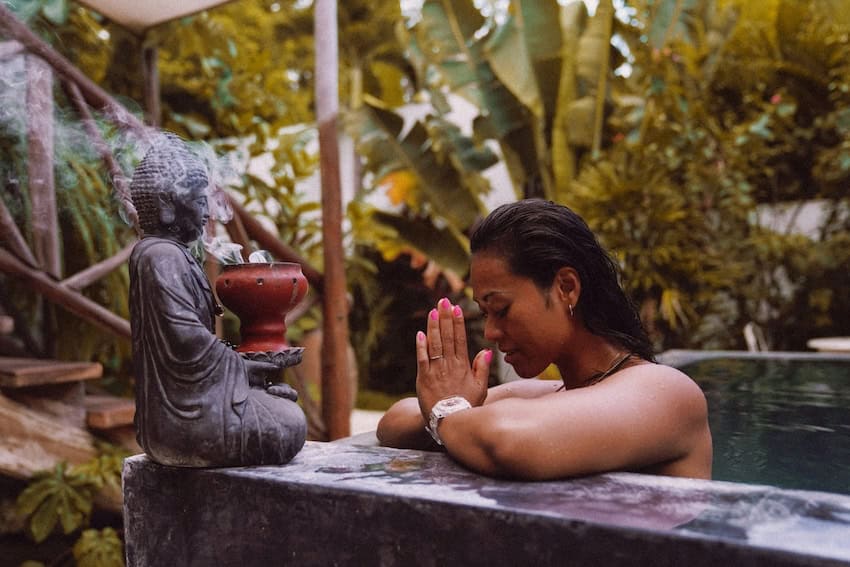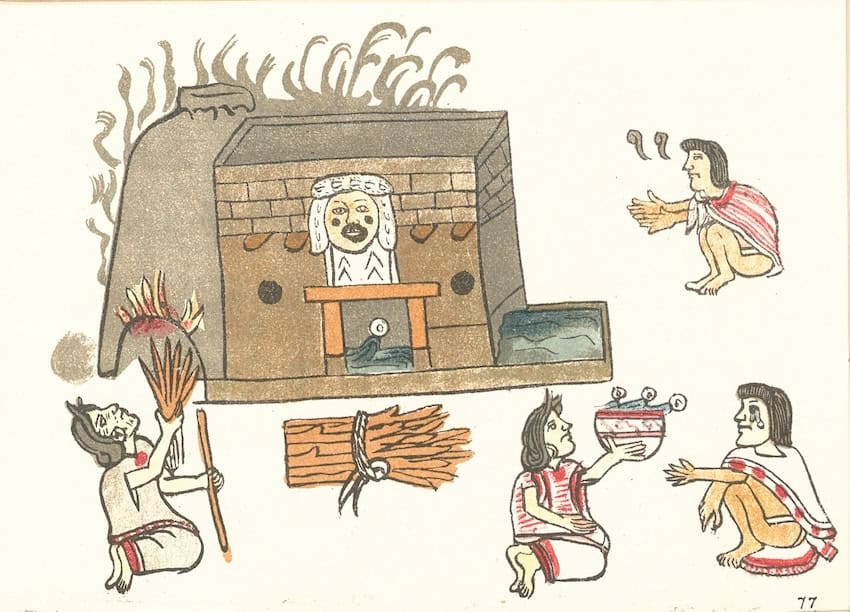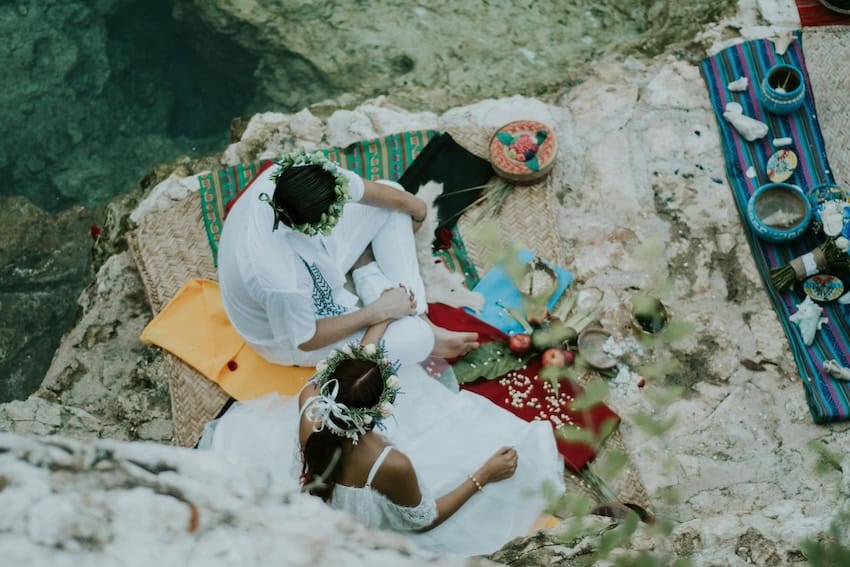The very first time I was in Tulum, I was commissioned to write a piece about an exclusive resort for National Geographic Traveler. The cameraman and I stayed at one of the most expensive hotels in the entire country for a week. It was my first experience of spiritual tourism in Mexico.
I was surprised to be welcomed by a gorgeous Venezuelan woman in a bikini and a light beach wrap, addressing us both in English with a heavy accent. She was the hostess. When I answered in my Mexican Spanish, not only was she surprised, but she seemed to be taken aback, as if thinking: “Mexicans? Here?”

Her expression was everything.
Despite her clear uneasiness, she urged a team of three staff members to start the limpia ceremony. The hostess asked us to hold hands, as the rest of the team walked in circles around us. One of them held a great copalera between her hands, steaming with palo santo, and smoked us from head to toe as her teammate chanted something in what they later said was ancient Mayan.
Why was a Buddha statue staring at us from above? Another staff member suggested we set an intention for our trip so that we could have Ixchel’s — the Maya goddess of fertility and the moon — blessing during our stay.
The hostess then instructed the team to guide us through the bungalows in the jungle to our rooms. Everyone was still surprised that we weren’t a foreign couple, as we were willing to take the 7 a.m. yoga class after a quartz meditation session while we admired the sunrise. By then, I assumed I was already high on copal smoke or whatever they were burning right in my face. Unfortunately, that was not the case: Before our eyes spread the phenomenon of spiritual tourism in Mexico, a profoundly misleading and gentrified understanding of local uses and customs.
Were limpias and other kinds of ‘traditional’ cleansing performed by the ancients?
The easy answer is yes. “Limpias” have been a part of “virtually all healing rituals in traditional Mazatec medicine,” as documented by the National Autonomous University of Mexico (UNAM). As its name suggests, limpias — or cleansings — are designed to cleanse spiritual and physical impurities from the human body.

Although there is no clear evidence as to when these practices began, historians suggest that several different pre-Colombian civilizations in what is now present-day Mexico shared these rituals.
Intended to soothe pain, curses or even fright, a shaman or local doctor would cleanse the ill person “with fragrant plants, such as basil, and red flowers” if the ailment was easy to treat. If, however, they encountered a more serious matter, more complex rituals would be performed, featuring lotions and sacred fungi.
Limpias varied from culture to culture. However, these elements were shared by most pre-Colombian civilizations. Most Mazatec therapists, for example, used divination via corn kernels and eggs — usually referred to as “blanquillo” — to diagnose their patients. Moreover, most limpias were performed in holy places, such as the therapist’s private altar, cenotes and other sacred spaces.
Limpias, of course, were not the only kind of medical procedures performed by ancient civilizations in Mesoamerica. Evidence shows the Maya had enough technology for dental procedures, as shown by research published by the Iztacala Faculty of Higher Studies (FES Iztacala). The medicinal use of temazcal rituals among the Nahua cultures was a way of cleansing the body through sweat, as biologist Margarita Avilés wrote for the INAH Morelos Center, and is still practised across the country. Cacao ceremonies, by the way, did not feature among the cleansing procedures of any ancient civilization.
It is worth noting that these rituals and spiritual cleansings did not remain the same throughout time. On the contrary, with the expansion of the Mexica Empire — and the growing commercial networks built across the centuries — pre-Colombian civilizations influenced each other. With the arrival of the Spaniards on the American continent, medical practices in the Americas also changed drastically.
Why are these alleged ‘ancient rituals’ only performed in high-demand tourist centers?

When Cortés wrote his Relation Letters in the 16th Century, addressing Emperor Charles V himself, he described México-Tenochtitlan as a highly advanced city. The builders of the great, ancient city likely did not perform cacao ceremonies half-naked in performative trances or dancing in circles.
That is more of a caricature of what actual ritualistic dancing was like before the Conquest. Not only that, it’s also probably not even close to the religious practices the Mexica performed in their holy city: Most documentary evidence was destroyed by the Spaniards upon their arrival, considering it all blasphemous and unworthy of “good” Christian customs. The surviving evidence dates only to the 16th century.
However, entire Mexican families today are sustained by such performances, targeted at foreigners trying to get a taste of what that pre-Hispanic era was like. Those who perform limpias in Mexico City’s Zócalo do so in a new kind of cultural fusion, taking whatever supposedly ancient practice they were taught and what works with folk from abroad.
Tulum was not built for the Tuluminati
Many of these so-called ancient rituals are a product of the New Age movement. Presented as a “new integral ecological and holistic awareness,” as described by anthropologist Elizabeth Díaz Brenis, “[the movement] takes up approaches from the main religious traditions,” including elements of the pre-Colombian belief system.
New Age believers truly think that cacao ceremonies connect their souls to something greater. When you ask them to what, exactly, they wander around the idea of a god/goddess, the universe or something that elevates their third eye.

Though this might not seem harmful at first, these scattered elements of ancient cultures, all mixed into a heterogeneous mass, are often out of context. And though it might bring “ceremonial grade cacao users” a great joy to sing to the Pacha Mama as they drink hot cocoa, the idea that this practice comes from a millennia-old tradition is, to say the least, misinformed.
Disguised as white magic or spiritual cleansing — through crystals, sacred smoke and more— practitioners of these New Age “ancient” activities are often charging their customers in dollars and using elements taken from other cultures. Not only that: Entire yoga retreats and “healing” rituals are performed by people who are not mental health professionals, and, at times, address deep trauma as if it were some sort of Kundalini energy awakening.
That’s part of the reason there was a Buddha staring down at us during a supposedly Mayan blessing. And that is why, too, New Age rituals are potentially dangerous both for their consumers and to the general understanding of local traditional practices. Thai figurines, Hindu mantras and pseudoancient Mesoamerican practices are all brought together as if they were the same, each bastardized from its original culture.
But spiritual tourism in Mexico has made many foreigners believe otherwise.
Andrea Fischer contributes to the features desk at Mexico News Daily. She has edited and written for National Geographic en Español and Muy Interesante México, and continues to be an advocate for anything that screams science. Or yoga. Or both.
